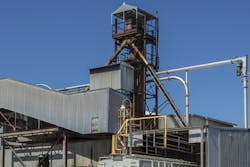We live in a truly remarkable age of technology. In fact, it is so remarkable that amazing technological advances have become commonplace. Computers are so small and affordable now that companies are using them to turn everyday objects into "smart" tools. Lightbulbs and thermostats that can be programmed from your smartphone, fitness trackers you wear on your wrist to monitor your physical activity throughout the day — these are just a few examples of devices that until recently seemed possible only in science fiction movies.
Now, fiction has become reality to the point where this type of technology has a name: The Internet of Things (IoT). In basic terms, IoT refers to millions of tiny devices collecting and sending data automatically across the internet. In the consumer realm, IoT is most evident in innovative "smart" products like the ones mentioned previously — readily available devices that track our activity, monitor our homes, allow us to operate our appliances from remote locations and more. The goal is to make our lives easier by giving us insight into — and control over — the things that affect us on a daily basis.
However, for process industry professionals, this level of convenience and insight seems to disappear when they arrive at work. After checking their phones one last time to make sure they closed their garage door — and using the phone to close it remotely if they didn’t — they spend the next eight to 10 hours personally monitoring systems and processes to avoid maintenance issues and catastrophic failures that can bring their entire operation to a halt. But a major change for the better
is on the horizon.
IIoT — A brain center for operations
On the verge of widespread implementation, Industrial IoT (IIoT) is a modern way to boost productivity and improve operational efficiency. Forward-thinking companies in the process industries soon will be able to use small computers, sensors and wireless networks to collect, analyze and share data across their entire facilities using virtually any connected device, such as a PC, smartphone or tablet. Robust analytics capabilities provide real-time monitoring for predictive maintenance, as well as operational insights that can be applied back to the factory floor to streamline processes.
While not yet available, the robust analytics capabilities of IIoT will provide operational insights that can be applied back to the factory floor to streamline processes.
Adding this advanced electronic and wireless technology to equipment and systems will be like having a human nervous system for your entire operation. Companies that don’t use IIoT will be operating with a compromised nervous system that is not firing on all cylinders (or synapses, if you will). Imagine if it took you hours or days to realize you stubbed your toe. Or worse, you didn’t realize it at all. A properly functioning nervous system allows you to address a potential problem immediately. Without such a system, all you can do is look at your bruised or broken toe later and wonder what happened after the injury has become significantly worse. In essence, this is how manufacturers have been managing industrial operations for decades.
Of course, the human nervous system isn’t merely reactive, it’s proactive — and so is IIoT. Your hand can feel heat before you burn yourself on a hot stove and your eyes can see approaching objects before they hit you. A well-implemented IIoT strategy will mean you can detect issues before they cause problems in your process, damage to your equipment and disruptions to your operations. It will be a whole new way to manage manufacturing in process industries, and it won’t be an exaggeration to call it a revolution.
Welcome to Industry 4.0
Industrial revolutions are nothing new; there have been several throughout history. Each one was marked by the adoption of a new way of doing things, followed by a boost in productivity. The first industrial revolution involved the advent of heavy machinery and steam power. Another was born from the assembly line. Most recently, the digital revolution has centered around computers and automation.
For consumers, each of these revolutions influenced almost every aspect of daily life in some significant way. For manufacturers, each increased productivity. The digital revolution in particular boosted productivity by about 4 percent a year for almost a decade. However, since the Great Recession began more than a decade ago, the Bureau of Labor Statistics reports that productivity growth in the United States has been a little more than 1 percent. Many experts believe IIoT is going to usher in the next industrial revolution. That is why many are calling it "Industry 4.0."
The Industry 4.0 productivity boost will come from:
- Connected and transparent operations
- Eliminated unplanned downtime
- Dramatically improved operational efficiency
- Heightened safety and environmental awareness
There are many facets to an industrial process, and IIoT stands to positively impact each one. Material handling systems in process industries can be especially challenging due to their complexity, multiple applications depending on facility and purpose, and the crucial role they play in an operation’s overall success. The combination of these factors makes it
difficult to:
- Diagnose efficiency issues
- Find bottlenecks
- Identify the optimal operational methods for each specific application
- Endure unplanned downtime
Fortunately, each of these difficulties will soon become a thing of the past, because monitoring processes without technology will be unthinkable. Instead of noticing a failure after it happens, IIoT sensors will alert operators that a part of the equipment is beginning to show wear and will need servicing soon.
How IIoT will work with material handling equipment
Hypothetically, let’s imagine a conveyor equipped with IIoT technology in a food production facility. As pressure and motor current sensors constantly
collect data from the equipment, a pattern emerges from the pressure sensor detecting decreased material. Meanwhile, the motor sensor detects spikes in power consumption. Just like that, IIoT technology has identified a decrease in capacity long before anyone on the shop floor would notice.
The system sends an alert to the supervisor and maintenance team via local notification, email, text messages and push notifications, ensuring that everyone sees the alert immediately, wherever they are. The team is now aware of a problem with the motor and can address it during planned downtime, thus preventing any slowdown in production and creating a significant increase in productivity while reducing unplanned downtime.
In addition to monitoring productivity, IIoT will also be beneficial to monitoring different types of equipment. For example, tubular drag conveyors are robust and exceedingly reliable. As such, these conveyors are routinely found in demanding industrial environments and situations where unscheduled downtime is most problematic. However, despite their reputation for performance, they are still subject to wear and require periodic adjustment like all mechanical equipment.
Specifically, the flights of this type of conveyor are a sacrificial wear item, meaning they are strategically designed to minimize wear to other components that are more difficult or costly to replace. But every conveyor is unique in terms of how it is configured, what it is handling, run times and other variables. As a result, flight wear can be quite different from one conveyor to the next, making it difficult to predict. Also, one of the principle advantages of the tubular drag conveyor is that it is totally enclosed. This advantage, however, obscures signs of wear and conceals the need for adjustment.
There are several signs that coincide with changes in a tubular drag conveyor’s wear and adjustment status, including vibration, amp draws and audible clicks. IIoT technology will make it affordable and convenient to measure, track and interpret these signs in such a way that enables the user to anticipate and schedule corrective action during periods of inactivity. Having the ability to recognize trends and predict when service will be needed has the potential to vault this proven problem-solver to even greater heights.
Smart solutions to material handling challenges
In the near future, processing facilities will need more than just equipment. They will need smart systems. As IIoT becomes commonplace and continues to evolve, equipment manufacturers are poised to provide their customers with powerful integration capabilities so they can incorporate valuable data from their material handling systems into their existing platforms. Because IIoT should do more than make life easier in the process industries — it should empower processors to optimize their industrial operation like
never before.
Kyle Till is a controls engineer for Hapman and a co-leader of the company’s IIoT implementation team.



